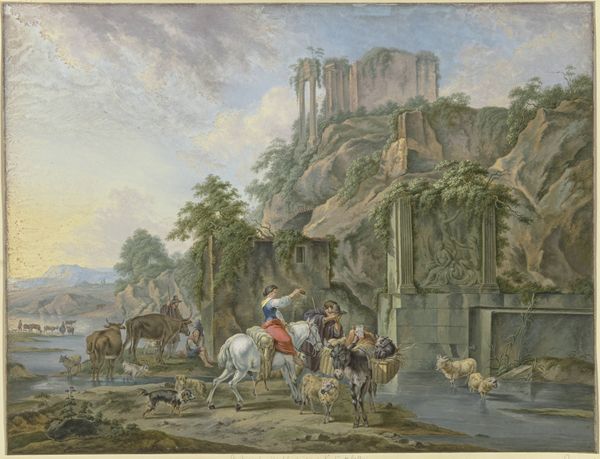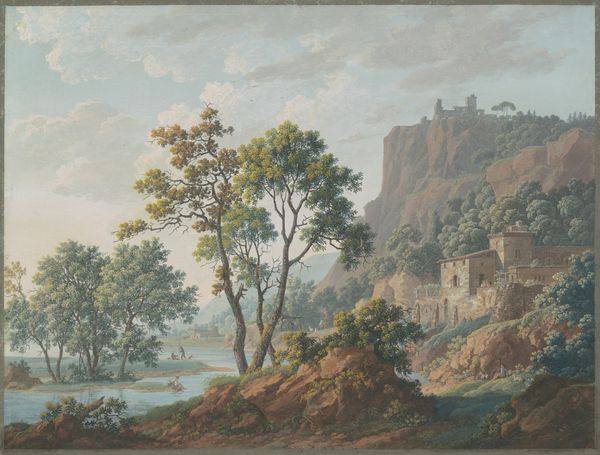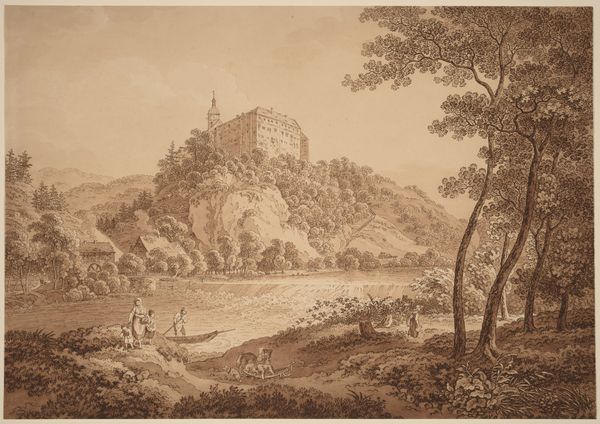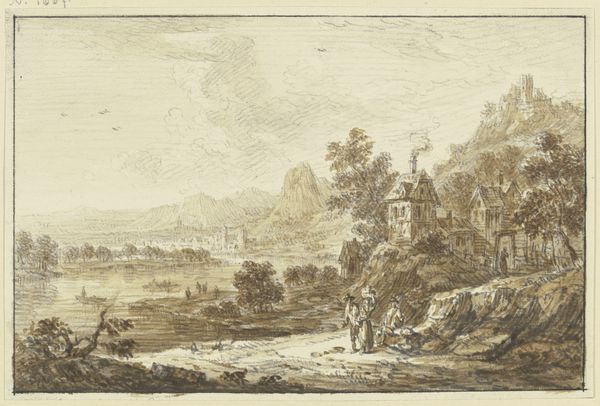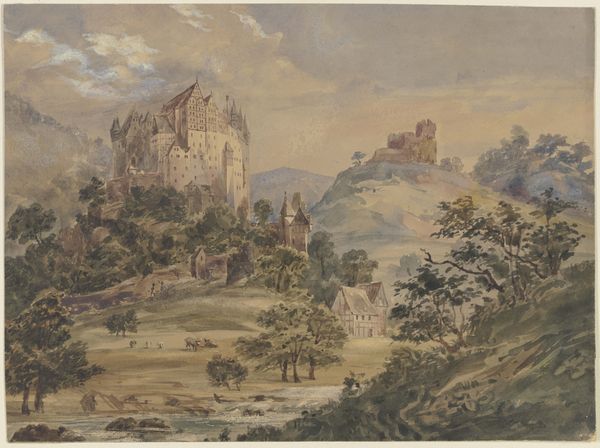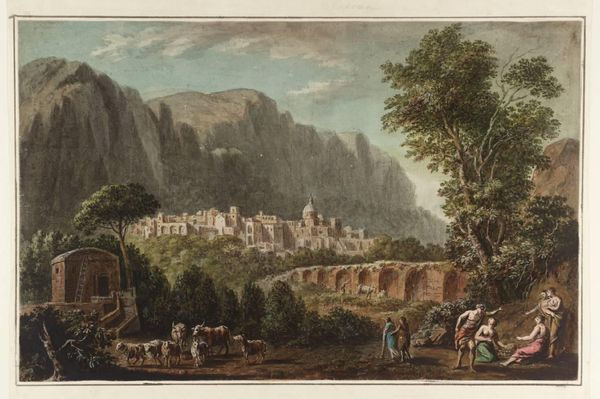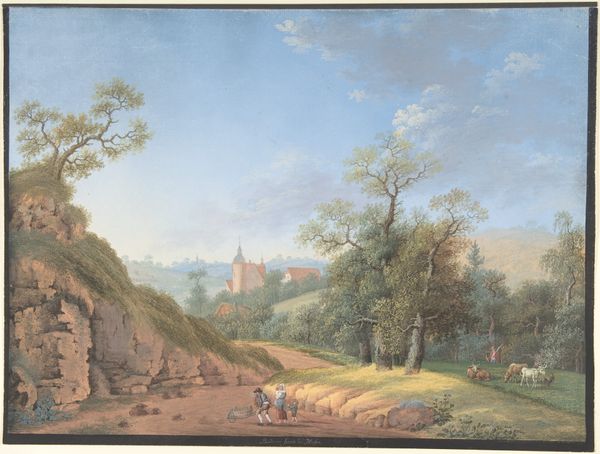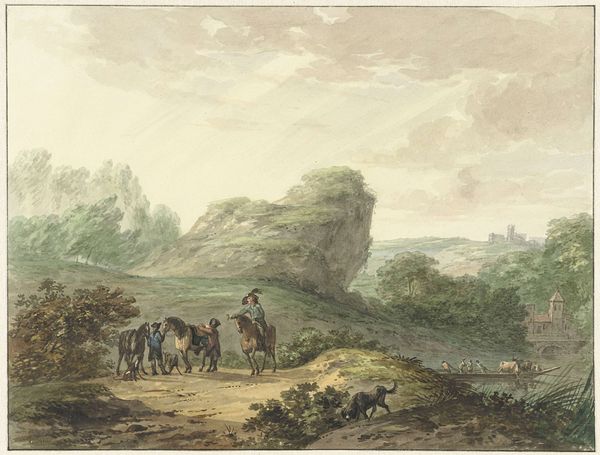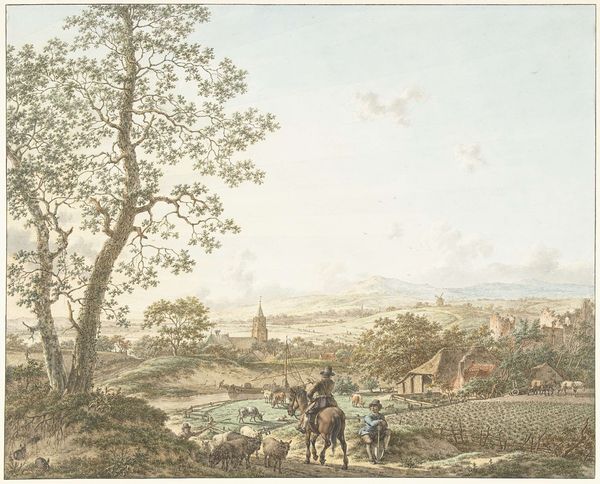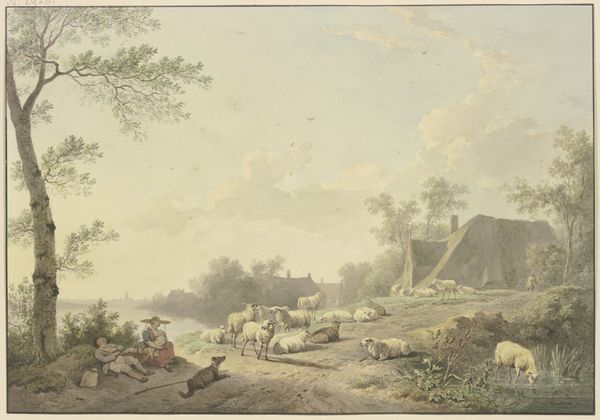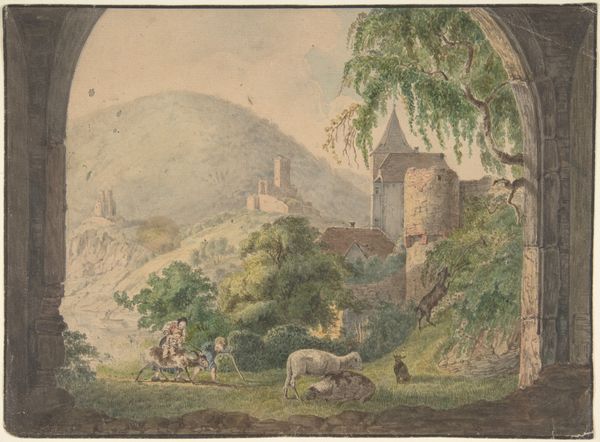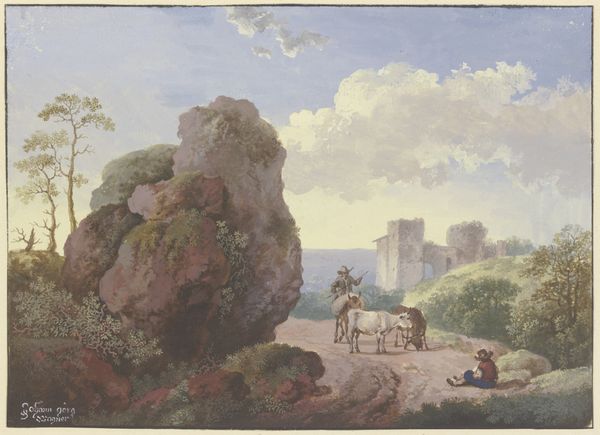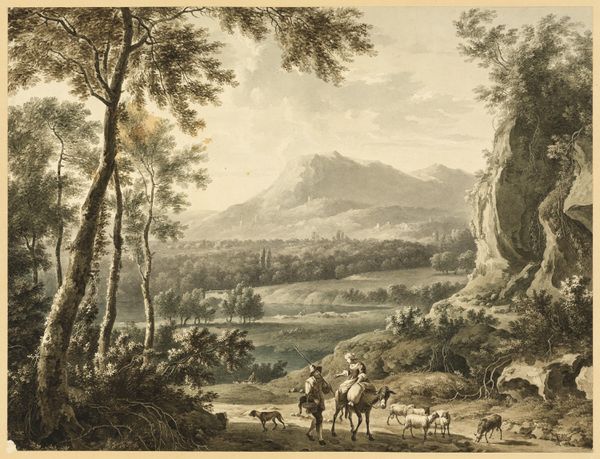
Landschaft, rechts eine Ruine, dabei eine Gruppe von Vieh mit Hirten, eine Frau melkt eine Kuh, der die Beine zusammengebunden sind, links ein Hirtenknabe mit einem Vogelnest und ein Mädchen mit einem Korb mit Blumen 1777
0:00
0:00
Copyright: Public Domain
Bernhard Heinrich Thier made this watercolor landscape, filled with shepherds, cows, and ruins. The soft, muted tones create a scene that is seemingly tranquil. However, look closer, and you may notice the ways labor is emphasized. The landscape has been transformed for agricultural purposes, and the shepherds and their animals are key to this transformation. Watercolors have their own inherent qualities, which Thier clearly understood. Thin washes of pigment allow light to reflect from the paper, creating luminosity. The artist layered these washes to build up form and depth. This process allowed for detailed depictions of the figures and landscape, while maintaining an overall sense of atmosphere. Landscape scenes like this were very popular at the time, and are reminders of how deeply intertwined human labor and the natural world really are. By paying attention to materials, making, and context, we can understand the full meaning of an artwork, challenging traditional distinctions between fine art and craft.
Comments
No comments
Be the first to comment and join the conversation on the ultimate creative platform.
